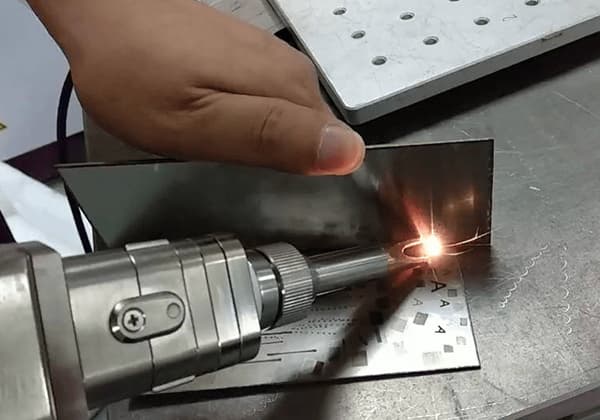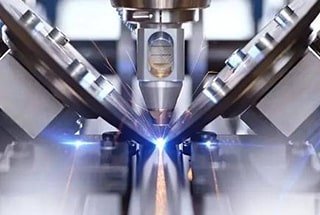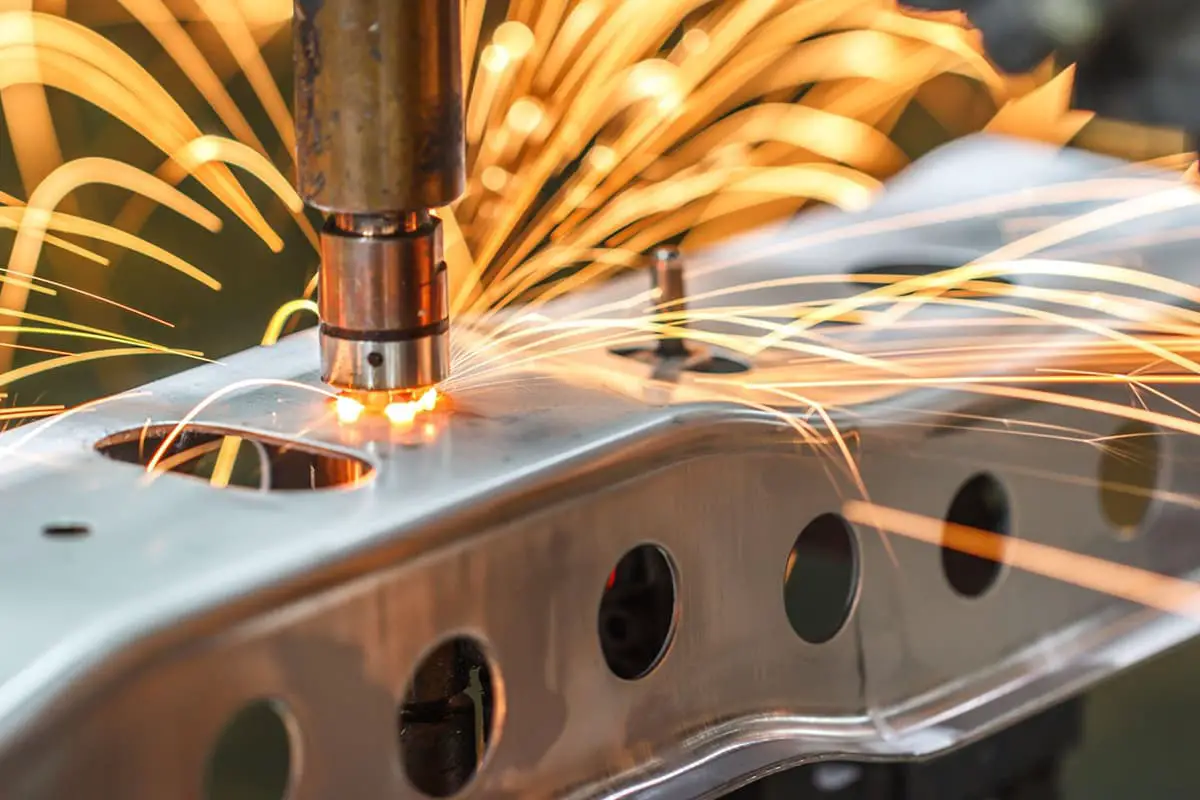Taking high-power laser as an example, the related parameters of side-blowing gas are studied.
For example, the relationship between the position, angle, composition and flow of side-blowing gas and plasma reveals the influence law of side-blowing gas on the stability and penetration of the welding process.
Compared with traditional fusion welding, laser welding has the advantages of large welding penetration, fast welding speed and small workpiece deformation.
However, in the welding process, the laser heat source with high power density will produce plasma cloud on the surface of the machined workpiece, which will absorb and refract the laser, so that the welding energy is greatly reduced during deep penetration welding of the workpiece.
Therefore, in order to reduce energy loss, in industrial applications, side-blowing auxiliary gas purging is usually used to suppress plasma.
In the process of laser welding, plasma is generally distributed on the surface of the workpiece and inside the small hole, and its shape and size change periodically in the whole welding process.
In the method of using side-blowing gas to inhibit plasma formation, helium is the most commonly used gas.
Compared with other commonly used gases, helium has the highest ionization energy, which means that it can absorb more energy before decomposition or ionization.
However, because helium is scarce and expensive, relevant experts have studied and selected new side-blowing gas or mixed gas to replace helium in many aspects.
At present, foreign researchers recommend the mixture of he: ar = 3:1 on the basis of considering the stability and gas economy of the laser welding process.
In addition, in order to optimize the side-blowing configuration and effectively suppress the plasma in the process of laser welding, researchers at home and abroad have also done a lot of research.
So far, although part of the work has focused on the introduction mode of side blowing, the shape, size and position of side blowing nozzle, some experts have also studied the influence of side blowing angle on penetration.
However, due to the difference of laser power and actual welding conditions, the corresponding research results are lack of universality.
In addition, the demand for further production and application also requires that this research work can reveal the essential law of side blowing in the laser welding process from the research mechanism, so as to effectively guide the actual production and application;
On the other hand, the laser hybrid welding process has attracted increasing attention from researchers and practical production.
In the process of CO2 laser hybrid welding, the gases involved include side-blowing gas required for laser welding and shielding gas required for traditional welding.
Because there are many parameters in the process of compound welding, users need to have a clear understanding of the action mechanism of the gas used.
Therefore, the experience and knowledge obtained from the research of side-blowing gas in laser welding are also helpful to the research of laser hybrid welding.
Experimental condition
15kw fast axial flow CO2 laser was used in the experiment.
The laser focal length was 357mm.
The welding test plate was 20mm thick marine high-strength steel ah32.
Laser surfacing was used on the welding test plate without filler wire.
The antirust paint on the surface of the test plate shall be removed by mechanical grinding before welding, and the oil stain shall be removed by acetone before welding.
Unless otherwise specified, the side-blowing gas is pure helium.
The specific experimental device is shown in Figure 1.
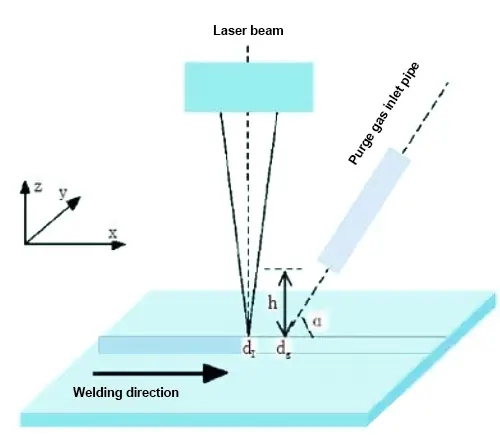
Fig. 1 Schematic diagram of experimental device
In the process of laser welding, the plasma is recorded synchronously by macro high-speed photography system, and the size and area of plasma in two-dimensional direction are calculated after welding.
Experimental process and results
1. Influence of laser power on plasma
The formation of plasma increases with the increase of laser power.
As can be seen from Figure 2, under the condition that the side blowing gas is also helium and the welding speed is 2m / min, the plasma morphology and size are very different under different laser power.
The plasma cloud generated by high-power laser welding is more obvious.
Therefore, the suppression of plasma by side-blowing gas is particularly important at this time.
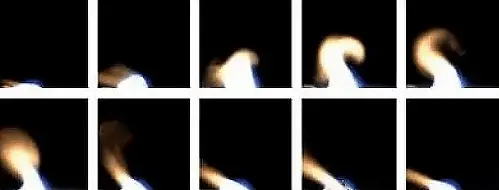
Laser power: 7K
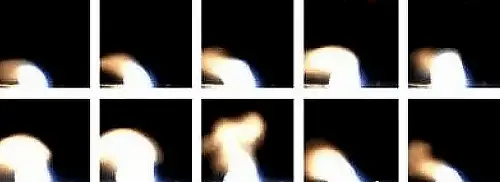
Laser power: 15K
Fig. 2 Effect of laser power change on plasma during laser welding
2. Influence of side blowing pipe position on plasma
The position of the side-blowing pipe determines the action point between the side-blowing gas flow and the plasma.
The observation shows that the suppression effect of plasma is different from the introduction position of side-blowing gas.
Fig. 3 shows the changing trend of the plasma area when the interval between the side-blowing gas introduction point (DG) and the laser entry point (D1) changes in the X direction.
It can be seen that the plasma is sensitive to the introduction position of side-blowing gas.

Position of side blowing gas in the X-axis direction
Fig. 3 Effect of different side blowing gas inlet points on plasma area
3. Influence of side-blowing pipe angle on plasma
When side blowing is used, the selection of side blowing gas introduction angle will also affect the suppression effect of plasma.
Fig. 4 shows the change of the corresponding plasma height when the angle of the side-blowing pipe changes.

Side blowpipe angle
Fig. 4 Effect of different side blowing angles on plasma height
4. Influence of side blowing flow on plasma
When different gas flow rates are used, the plasma morphology is very different.
Under the same experimental conditions (i.e. the side-blowing gas is helium, the welding speed is 2m / min, and the laser power is 12KW), when the high-flow side-blowing helium is used, the two-dimensional size of the plasma is significantly reduced, and its height and width are controlled within a very small range (as shown in Fig. 5).
Accordingly, the weld penetration and weld width will also change accordingly.
With the increase of side-blowing gas flow, the weld penetration will gradually increase (as shown in Fig. 6).
When the gas flow rate reaches 60L / min, the penetration is significantly improved.
Therefore, in practical application, the influence of plasma can be effectively suppressed by adjusting and controlling the side-blowing gas flow, so as to effectively improve the penetration.
On the other hand, considering the price of side-blowing helium, the higher the side-blowing gas flow is, the better. Instead, the optimal gas flow should be selected by evaluating the cost performance.
In addition, the research results show that the direction of side-blowing gas also has a direct impact on the stability of the welding process, weld surface forming and its overall dimension.
Therefore, the appropriate side-blowing direction should be selected according to the actual needs.

a) Gas flow: 20L / AIN
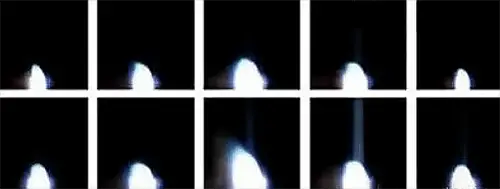
b) Gas flow: 70L / AIN
Fig. 5 Effect of different side blowing flow on plasma during laser welding
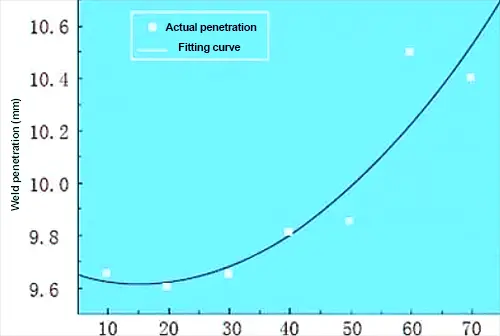
Gas flow (L / min)
5. Influence of gas composition on plasma
Fig. 7 shows the changes in plasma with different gas components.
Fig. 7a shows the partial plasma morphology when the side-blowing gas is helium, while Fig. 7b shows the partial plasma morphology when the mixed gas is used as the side-blowing gas.
It can be found from Fig. 7 that although the side blowing used in Fig. 7a and 7b are different, the size and shape of the plasma are similar. In Fig. 7C, the plasma presents different shapes and the size and shape are changed.
When the mixing composition changes further, as shown in Fig. 7d, the plasma increases significantly and extends above and around the workpiece.
When the energy of free electrons in the metal vapor constituting the plasma increases, the surrounding gases undergo avalanche ionization.
At this time, the plasma expands rapidly and even divides into two, which destroys the stability of the welding process.
The different plasma forms shown in figures 7b, 7C and 7d show that it is necessary to use the appropriate mixture to ensure its effective inhibition of plasma.
It should be noted that the side-blowing gas composition can be optimized only when other gas composition parameters such as the position of the side-blowing pipe are optimized.

(A: helium; B, C and D: helium argon mixture)
Fig. 7 Variation of plasma under different side blowing gas composition
Experimental analysis and discussion
1. Effect of side-blowing gas system parameters on plasma
When the side-blowing gas is selected to suppress the plasma in the laser welding process, the parameters involved in the side blowing gas introduction system, such as the position of the side-blowing tube in a three-dimensional direction, the parameters involved in the side-blowing gas introduction system, such as the position of the side-blowing tube, the introduction angle of the side blowing gas, the geometric size and shape of the side blowing tube, all have an impact on the plasma formation.
Thus, it has an impact on the process and results of laser welding.
Taking figures 3 and 4 as examples, the position and angle of the side-blowing pipe have an impact on the area and height of the plasma.
Relevant experts pointed out that the height and area of the plasma reflect the absorption and refraction of the plasma to the incoming laser.
When the introduction position of side-blowing gas changes, the change of plasma height and area can reflect the degree that the side-blowing gas parameters affect the absorption or scattering of the laser.
Therefore, by observing the plasma behavior in real-time, we can study and optimize the system parameters of side-blowing gas introduction, effectively suppress the plasma and improve the energy of the laser for welding.
- Effect of side blowing gas composition and flow on plasma
On the basis of optimizing the side-blowing gas introduction system, the side-blowing gas composition and flow can also be optimized for the actual welding task.
This can not only achieve a stable welding process but also ensure economy.
As shown in Fig. 7, selecting an appropriate mixture can also play a role equivalent to pure helium, and the economy of negative gas is greatly improved.
However, different side-blowing gas compositions (as shown in Fig. 7D) may lead to strong plasma explosion behavior, so it is impossible to ensure a stable welding process.
Recent laboratory work has shown that on the basis of optimizing the side-blowing gas system, the selection range of side-blowing gas composition can be widened.
Selecting the appropriate gas mixture can greatly improve the economy on the basis of ensuring the welding requirements and quality.
Epilogue
In the process of high-power CO2 laser welding, side-blowing gas is widely used to suppress the plasma in the welding process.
The correct selection of relevant parameters of side-blowing gas can make the incoming laser energy more effectively used in the deep penetration welding process.
Firstly, the position and angle of the side blow pipe are two important parameters, which have a direct impact on the size and shape of the plasma.
Therefore, the side blowpipe should be correctly positioned before welding.
Secondly, it should be considered to select the appropriate side-blowing gas composition and flow.
When the side-blowing gas flow increases, its inhibition effect on plasma increases accordingly.
The appropriate gas flow shall be determined according to the actual welding requirements.
In addition, considering many factors such as process stability and price, the mixture can also be used as side-blowing.
At this time, due to the change in gas’s physical properties, the interaction between gas and molten pool should be considered on the basis of plasma inhibition, and the appropriate gas flow should be selected accordingly.
